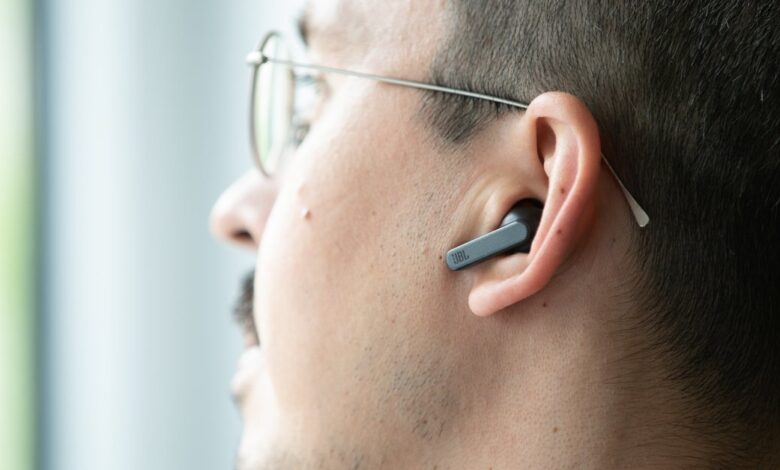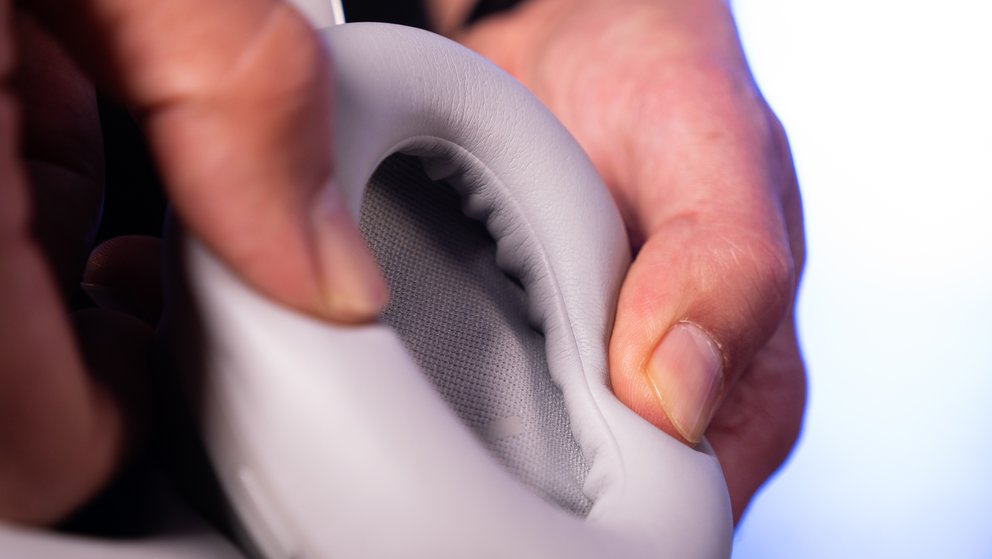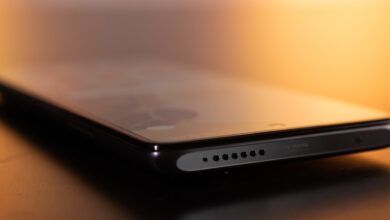Headphone sound: 4 reasons for different impressions

The sound of headphones not only has to do with their components. A large part of the perceived sound quality can be explained by the design and, above all, by the user, says GIGA audio expert Stefan.
Whether a graphics card is fast enough for Crysi’s current game hits can be clearly determined by the frame rate – there are no perceived truths in this regard. It is different with headphones, here it almost seems as if the users in Amazon reviews have written about completely different models: One complains about “shrill highs”, another praises “the many details in the high frequency range”. Who is right then? Well, there are actually reasons for these opposing assessments scientifically proven are.
1. The seat is crucial

Let’s start with a banal fact: headphones only sound the way they should sound when they are seated properly. This applies to both over-ears, in which the entire ear is enclosed, and in-ears, which have to seal the ear canal. Even if there is one tiny gap is available (e.g. due to a thick temple or silicone fittings that are too small), this is usually noticeable by the lack of bass. I personally have this problem with the Apple AirPods (2nd gen., Without “Pro”), which do not want to fit my ear canals due to their “open-fit construction” (without silicone adapters). Either I push it inwards again and again with my fingers – or the sound is thin and tinny. So it has nothing to do with what’s coming from the drivers comes out – but what about my eardrum arrives.
This phenomenon exists in infinite gradations and it is the simplest explanation for why someone complains in a review about the “completely missing bass range”. At least for in-ears there is a “trick”: you replace the normal silicone adapters with ear tips made of memory foam. They nestle better and provide an excellent seal.
2. Every ear is different, says science
How successful the eardrum functions as a “hearing aid” can be explained by a combination of shape, angular position and composition.
Jonathan P. Fay (University of Michigan) in “The discordant eardrum” (2006)

How does an eardrum in a person’s ear react to sound? How well is it able to convert captured sound energy? Different measured values can be determined, especially in the range from 2 kHz upwards (high tones). The distances are sometimes an impressive 20 decibels at the highest pitches – depending on Formation of the eardrum (deep, normal, shallow).
In other words: the eardrums in our ears are like microphones – you are born with a certain model that cannot be changed afterwards. In addition, there are differently shaped ear canals, which together have a significant impact on perception. This can even go so far that a weakness of a headphone model (e.g. overemphasis on the highs) can become a strength for some users. But it also means that our sound perception differs from person to person “due to the hardware”. The sound experience is subjective.
3. The perception of space is important and incredibly complex

Ever heard of the head-related transfer function (HRTF)? Well, we humans can locate sounds quite well, which increases the chances of survival in Jurassic Park in nature. We hear and know what is happening next to, above and below us without having to look there.
The location is the result of a process in which the auricles (shape), the head and the trunk (shoulder area) play a role. But that is only one part, because from then on there will be Spatial perception “As extremely complex, psychoacoustic process in the auditory center of the brain ”(Jürgen Schröder, Lowbeats). When listening to music, this ability comes into play when, in front of our inner eye, we hear the drummer on the left side of the “sound stage” while the saxophone is playing on the right.
So you can easily imagine where the problem lies: Commercially available (in-ear) headphones sometimes bypass this sound localization. The body lacks important clues, the spatial impression of a recording does not match the original (being there live). Some techniques for 3D sound can provide impressive spatiality for music and games over headphones, including HRTF, but then based on average values from many people. The perfect surround sound experience with headphones, on the other hand, requires complex individual measurements and appropriately processed sound material.
4. Ok, boomers

That Hearing ability changes in the course of life. While you as a child or adolescent can perceive frequencies of up to 20,000 Hertz without any problems, this threshold moves down a little each year. The high notes will always be quieter or not at all perceived. Regular disco and concert tours also play their part. Even a single New Year’s Eve can cause a bang trauma (damage to the inner ear). As a boomer senior, you will sooner or later suffer from presbycusis (old-age hearing loss). When exactly, it differs from person to person and depends on factors such as hereditary predisposition and diet.
Further to the topic:
I was in the techno club with 180 euro hearing protection
For headphones this means: How a model sounds depends on your age and hearing ability. A sound that seems too brilliant and exhausting for young people might sound just right for older semesters. Finally, there is the personal taste mentioned that can change. “I was young and needed the bass, “Say some hip-hop veterans who have banned the subwoofer from the trunk and now prefer jazz on a neutral equalizer setting.



